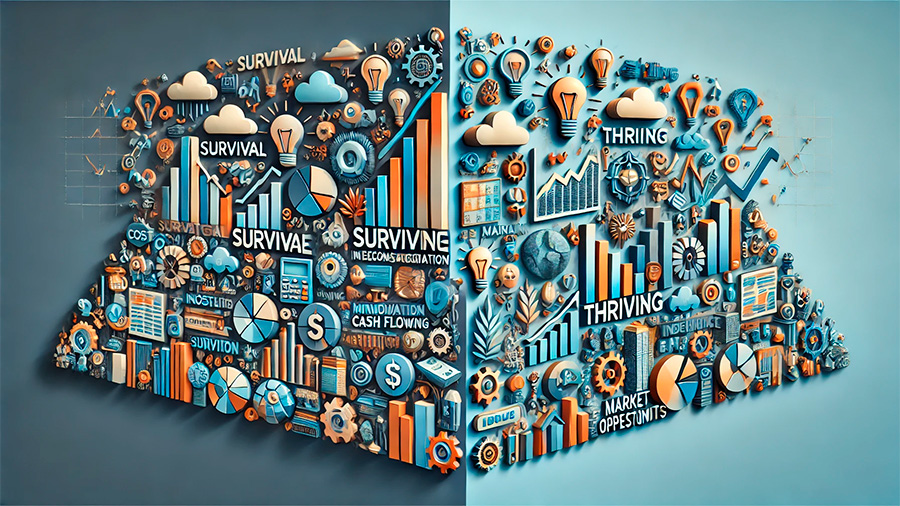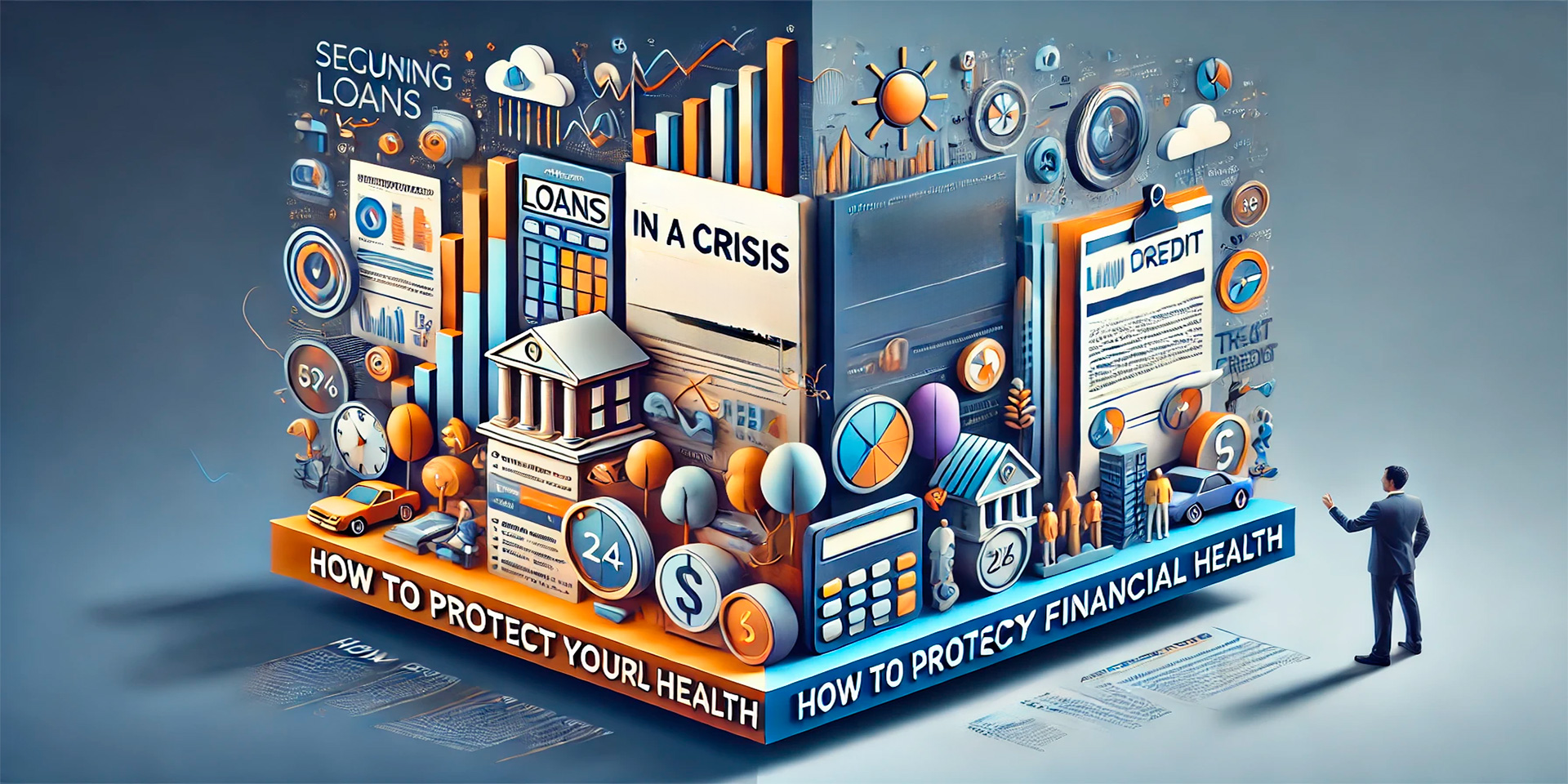Economic stagnation, characterized by slow or no growth in an economy, presents significant challenges for businesses of all sizes. During these periods, demand for products and services can decline, revenues may stagnate, and opportunities for expansion may feel limited. However, economic stagnation doesn’t have to spell disaster. With the right strategies, businesses can not only survive but also find ways to thrive in tough economic times. This article explores actionable strategies that companies can use to stay competitive, maintain stability, and even grow during periods of economic stagnation.
Understanding the Challenges of Economic Stagnation
Economic stagnation poses several specific challenges that can affect the day-to-day operations and long-term planning of businesses. Before diving into strategies, it’s important to understand how stagnation impacts different aspects of business operations.
Reduced Consumer Spending
During periods of stagnation, consumers often tighten their belts, cutting back on discretionary spending. This reduction in demand can lead to declining sales for businesses, particularly in industries that rely on consumer spending, such as retail, hospitality, and non-essential services. Reduced spending power among consumers also means businesses may need to adjust their offerings to attract cost-conscious buyers.
Limited Access to Credit and Financing
Economic stagnation can lead to tighter lending conditions, as banks and financial institutions become more cautious about extending credit. Businesses may find it more difficult to secure loans or investment, limiting their ability to expand or invest in new projects. For companies reliant on financing for operations or growth, limited access to capital can present a significant hurdle.
Increased Competition
As demand declines, businesses may face increased competition for a shrinking pool of customers. Companies are forced to compete more aggressively on price, service, or value, making it harder to maintain profit margins. In some industries, the fight for market share becomes even more intense, as companies look for any edge to stay afloat.

Strategies for Surviving and Thriving in Economic Stagnation
While economic stagnation brings challenges, businesses that adapt can position themselves for success, even in tough times. The following strategies can help companies maintain stability and find opportunities for growth.
Focus on Core Competencies
During periods of economic stagnation, it’s crucial for businesses to focus on their core competencies—the products, services, and strengths that set them apart from the competition. Rather than trying to diversify too broadly, which can spread resources thin, businesses should double down on what they do best. This may involve refining their product line, improving service quality, or enhancing customer relationships.
By concentrating on core competencies, businesses can strengthen their market position and ensure they remain competitive, even as demand softens. Additionally, businesses that continue to deliver high-quality products or services can build customer loyalty, which becomes even more valuable during economic downturns.
Optimize Costs Without Sacrificing Quality
Cost-cutting is a common response to economic stagnation, but it’s essential to reduce expenses in a way that doesn’t compromise the quality of your offerings or harm long-term growth potential. Instead of making across-the-board cuts, focus on optimizing costs in areas that don’t directly affect the customer experience.
For example, businesses can renegotiate supplier contracts, streamline processes, or adopt technology solutions that increase efficiency. Cutting unnecessary expenses, such as non-essential travel or underperforming marketing campaigns, can free up resources while maintaining the level of quality customers expect.
Adapt to Changing Consumer Needs
Consumer behavior often shifts during periods of economic stagnation, with buyers seeking out more value for their money. To stay competitive, businesses need to understand these changing needs and adapt their offerings accordingly. This might involve introducing lower-cost versions of popular products, offering flexible payment plans, or providing more bundled services to increase perceived value.
Listening to customer feedback and conducting market research can help businesses identify the adjustments needed to meet new consumer expectations. Companies that successfully align their products or services with customer needs during tough times are better positioned to retain existing customers and attract new ones.
Leverage Technology for Efficiency and Innovation
Technology plays a critical role in helping businesses reduce costs, increase efficiency, and drive innovation during economic stagnation. Implementing digital tools—such as cloud computing, automation, and data analytics—can streamline operations and free up resources for growth initiatives.
For example, businesses can use customer relationship management (CRM) systems to enhance customer engagement and sales forecasting, or they can automate routine tasks to reduce labor costs. Additionally, investing in e-commerce platforms or digital marketing tools can help businesses reach new customers and expand their online presence during times when in-person sales may be declining.
Technology can also foster innovation, helping businesses introduce new products or services that meet evolving customer needs. By staying at the forefront of technological advancements, companies can remain agile and responsive to changing market conditions.
Strengthen Customer Relationships
Customer loyalty becomes even more important during periods of economic stagnation. Maintaining strong relationships with existing customers can help businesses secure repeat business, which is often more cost-effective than acquiring new customers. Focusing on customer retention can provide stability when new sales are harder to come by.
To strengthen customer relationships, businesses should focus on providing excellent service, being responsive to customer concerns, and offering personalized solutions that meet their needs. Reward programs, special discounts for loyal customers, or enhanced customer support can go a long way in building trust and loyalty.
Additionally, clear communication during tough times is crucial. Whether you’re addressing supply chain disruptions, service delays, or pricing changes, keeping customers informed and maintaining transparency will help build trust and ensure long-term loyalty.
Diversify Revenue Streams
While focusing on core competencies is essential, businesses should also consider diversifying revenue streams to mitigate risk during economic stagnation. This doesn’t mean overextending into unrelated markets, but rather finding complementary products or services that add value to your existing offerings.
For example, a business could explore subscription-based models, offer premium services, or expand into digital channels such as e-commerce or online consulting. By tapping into new revenue streams, companies can create additional sources of income and reduce dependence on one line of business, which may be particularly vulnerable during a downturn.
Invest in Employee Development
Your workforce is one of your most valuable assets, and investing in employee development can provide long-term benefits during periods of economic stagnation. Offering training programs or upskilling opportunities can improve employee performance, boost morale, and increase overall productivity.
Employees who feel valued and empowered are more likely to remain engaged and loyal, reducing turnover and helping businesses maintain operational efficiency. Moreover, by developing a more skilled workforce, companies are better prepared to innovate and adapt to changing market conditions, positioning themselves for growth when the economy recovers.

Preparing for Long-Term Growth After Stagnation
While surviving economic stagnation is the immediate goal, businesses should also keep an eye on the future. Stagnation is often followed by periods of recovery, and businesses that have adapted during tough times are often in a stronger position to capitalize on new opportunities when growth returns.
Monitor Market Trends and Opportunities
Even in a stagnant economy, new trends and opportunities can emerge. Businesses that stay vigilant and continuously monitor their market can identify potential areas for growth or expansion. This could involve capitalizing on emerging consumer preferences, tapping into new markets, or adopting innovations that set the stage for future success.
Staying ahead of trends allows businesses to be proactive rather than reactive, ensuring they are ready to move quickly when the economic environment improves.
Build Financial Resilience
Maintaining financial health during economic stagnation is essential for long-term success. Businesses that successfully navigate stagnation are those that maintain healthy cash flow, reduce unnecessary debt, and build up financial reserves. By focusing on financial resilience, companies can better withstand future economic challenges and seize growth opportunities when the market rebounds.
In addition to cutting costs and increasing operational efficiency, consider working with financial advisors to develop a long-term financial strategy that prepares your business for both short-term challenges and long-term growth.
Conclusion: Thriving in Stagnation Requires Adaptation
While economic stagnation presents serious challenges for businesses, it is possible to survive—and even thrive—by adopting the right strategies. By focusing on core competencies, optimizing costs, leveraging technology, and strengthening customer relationships, businesses can maintain stability during tough times. Additionally, finding ways to diversify revenue streams, invest in employee development, and build financial resilience can position companies for future growth when the economy eventually rebounds.
Economic stagnation doesn’t have to be a period of decline. With careful planning, innovation, and adaptability, businesses can navigate stagnation successfully and emerge stronger in the long run.





